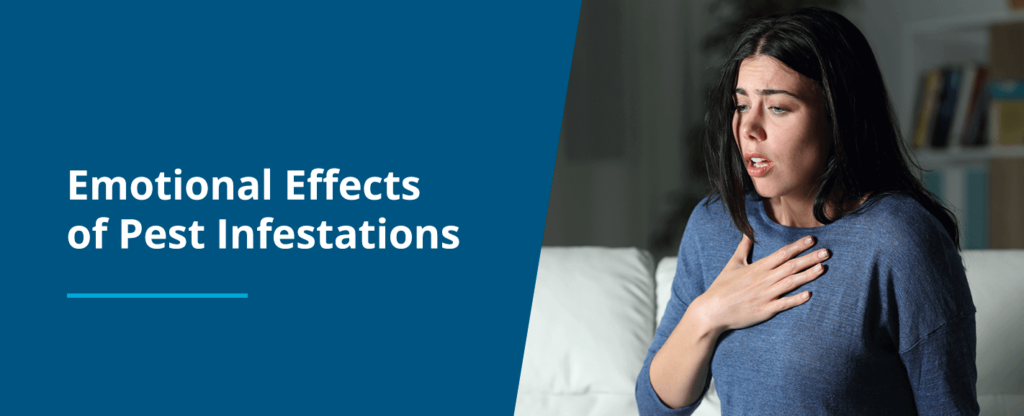Things about Eco Bed Bug Exterminators Dc
Table of ContentsSome Known Facts About Eco Bed Bug Exterminators Dc.Fascination About Eco Bed Bug Exterminators DcEco Bed Bug Exterminators Dc Fundamentals ExplainedNot known Facts About Eco Bed Bug Exterminators DcThe Definitive Guide to Eco Bed Bug Exterminators Dc
Since pesticides are harmful, they are also potentially unsafe to human beings, animals, various other organisms, and the setting. For that reason, individuals that use pesticides or consistently can be found in call with them must recognize the relative toxicity, potential health impacts, and preventative procedures to decrease exposure to the items they use. Hazard, or danger, of using chemicals is the capacity for injury, or the level of risk associated with using a chemical under a given collection of conditions.
Nonetheless, applicators can lessen or nearly eliminate direct exposure-- and hence reduce threat-- by complying with the label instructions, using personal protective apparel and equipment (PPE), and taking care of the pesticide effectively. More than 95 percent of all pesticide direct exposures come from dermal direct exposure, largely to the hands and forearms. By using a set of unlined, chemical-resistant gloves, this kind of direct exposure can be nearly removed.
The unsafe impacts that occur from a solitary exposure by any path of entrance are described "intense impacts." The four routes of exposure are dermal (skin), breathing (lungs), dental (mouth), and the eyes. Intense poisoning is figured out by taking a look at the dermal toxicity, breathing poisoning, and oral poisoning of guinea pig.
The Basic Principles Of Eco Bed Bug Exterminators Dc
Intense toxicity is measured as the quantity or focus of a toxicant-- the a.i.-- needed to eliminate 50 percent of the animals in a test populace. This procedure is generally shared as the LD50 (deadly dose 50) or the LC50 (deadly concentration 50). In addition, the LD50 and LC50 worths are based upon a single dosage and are taped in milligrams of chemical per kilogram of body weight (mg/kg) of the test pet or partly per million (ppm).
The reduced the LD50 or LC50 worth of a chemical product, the greater its poisoning to humans and animals. Pesticides with a high LD50 are the least toxic to human beings if utilized according to the directions on the item tag. The chronic poisoning of a chemical is identified by subjecting examination animals to long-lasting exposure to the active ingredient.
The persistent poisoning of a chemical is more difficult than severe toxicity to determine via laboratory analysis. Products are classified on the basis of their family member intense toxicity (their LD50 or LC50 values). Chemicals that are classified as highly toxic (Toxicity Category I) on the basis of either dental, dermal, or breathing toxicity must have the signal words threat and POISON published in red with a skull and crossbones icon plainly showed on the front panel of the plan tag.
The intense (single dose) oral LD50 for chemical items in this group ranges from a trace total up to 50 mg/kg. For example, exposure of a couple of drops of a material taken by mouth might be deadly to a 150-pound individual. Some pesticide items have just the signal word DANGER, which informs you nothing concerning the acute toxicity, simply that the item can cause severe eye damage or serious skin inflammation
The 7-Second Trick For Eco Bed Bug Exterminators Dc
In this classification, the acute oral LD50 varieties from 50 to 500 mg/kg. A tsp to an ounce of this material might be deadly to a 150-pound individual (exterminator). Chemical items classified as either a little toxic or fairly safe (Toxicity Groups III and IV) are needed to have the signal word care on the chemical tag

All pesticide poisoning values, including the LD50, can be found on the product's Material Safety Information Sheet (MSDS) - how to get rid of bed bugs. Pesticide tags and MSDS can be acquired from merchants or manufactures. In addition, most products additionally have info that can be discovered on the web. The symptoms of pesticide poisoning can range from a light skin irritation to coma and even death.
Due to the fact that of prospective health problems, chemical his explanation individuals and handlers have to acknowledge the common indicators and signs of pesticide poisoning. The effects, or signs and symptoms, of pesticide poisoning can be extensively defined as either topical or systemic.
Our Eco Bed Bug Exterminators Dc Ideas
Dermatitis, or swelling of the skin, is accepted as one of the most typically reported topical result connected with chemical direct exposure. Symptoms of dermatitis array from reddening of the skin to breakouts and/or sores. Some people tend to cough, hiss, or sneeze when revealed to chemical sprays. Some people respond to the solid smell and irritating effects of petroleum distillates utilized as providers in chemical products.
This signs and symptom normally subsides within a few mins after a person is removed from the exposure to the toxic irritant. A reaction to a chemical product that creates someone not just to sneeze and cough however also to create serious acute respiratory signs is a lot more likely to be a real hypersensitivity or allergic response.
Systemic impacts are fairly different from topical effects. They often occur away from the initial factor of contact as a result of the chemical being taken in into and dispersed throughout the body.